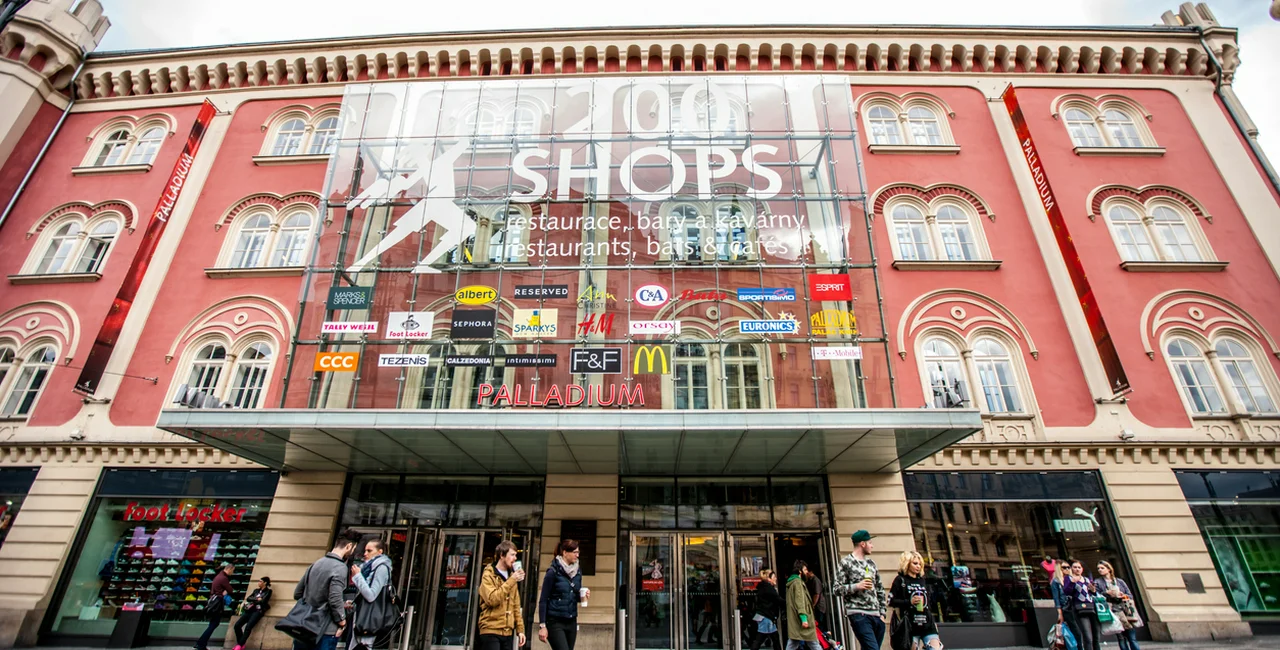Shopping centers in the Czech Republic have been successful again, but e-commerce is gaining ground. The highest growth at shopping centers was in gastronomy, while electronics saw a drop, according to the CBRE Shopping Center Index study, compiled for the seventh year by the retail service firm CBRE.
The study looks at
the Czech shopping centers outside of Prague, which represent over
560,000 sqm of retail areas and were visited by 95 million customers
in the last year.
Another study by JP Morgan Chase and Co shows that e-commerce is on the rise, and the Czech Republic is expected to be a leader in growth. “E-commerce growth as a whole across the European region remains strong. It is slowing slightly in more mature markets. …However, a number of smaller markets present compelling opportunities,” JP Morgan’s 2019 Global Payments Trends Report – European Overview stated.
“Of the 18
European countries we examined, 10 are projected to enjoy
double-digit e-commerce market expansion between now and 2021, with
the Czech Republic (16 percent), Italy (14 percent) and Spain (13.5
percent) ranking highest for predicted growth,” JP Morgan Chase
added.
But CBRE says that
there is room for growth in both shopping platforms. Although the
number of visitors to the centers grew minimally, 2.5 percent on
average in 2018, the average basket has grown consistently every year
for the entire existence of the index. “Over the past seven years,
it grew by an incredible third and it is mainly due to strong
turnover recorded over the past five years,” Tomáš Míček, head
of retail property management at CBRE, said.

“This trend is
significant in the context of the long-term growth of online
shopping. It can be seen that despite strong online growth, the Czech
Republic has the second-highest online share in Europe, Czechs still
like to shop in shopping centers, and shopping centers are not
weakened as a platform for selling goods and services. On the
contrary, both platforms grow,” Míček said.
Turnover in Czech
regional shopping centers grew for the fifth consecutive year,
according to CBRE. Compared with the previous year, turnover grew 4.2
percent. Rents grew only minimally and the vacancy rate is stable.
The “rent-to-sales ratio” reached a historical minimum and the
average basket achieved its historical maximum. This once again
proves that Czech retail is doing well, CBRE states.
The highest growth
of turnover was in the area of gastronomy, up 9.5 percent, and
services, up 7.9 percent and specialty retail, up 7.9 percent, while
electronics dropped by 5.1 percent
Since 2014, there
has been an upward trend in turnover, which achieved record values
over the last five years and showed total revenue grew of 35 percent
over this period. The growth slowed to 4.2 percent last year. This is
still a very good result from the perspective of the Czech market,
according to CBRE.

“The fashion
segment also significantly participated in the overall growth,
although it grew only by 3.8 percent. With its share of 38 percent to
the overall gallery area, it is the largest sector and therefore the
most affected,” Milan Mašša, head of CBRE’s retail advisory and
transaction services, said, adding that the performance of anchor
tenants in the fashion, sports and toy sectors is still growing .
Gastronomy is the
most dynamic sector, which registered the biggest growth since 2015.
“The average turnover in the gastronomy sector grew by 9.5 percent
year-on-year in the year 2018 and in the last three years, it grew by
more than 40 percent. The services sector registered exceptional
results thanks to hairdresser’s and beauty salons and travel
agencies, which reported the highest year-on-year growth within the
individual services, i.e. 20.2 percent,” Klára Bejblová,
associate director retail research and consulting at CBRE, said.
Rents have been
stable. It could be expected that four years of strong turnover
growth will show up in the growth of average rent, but this did not
happen. In 2017, the average rent grew for the first time by almost 5
percent, but 2018 did not repeat this growth. The average rent grew
by only 1 percent.
“However, when we
look at the individual sectors, there is an interesting consistent
trend of rent growth for the four sectors over the past three years.
In 2018, the biggest growth was recorded in the household equipment
and furniture sector, by almost 12 percent, also in the gastronomy
segment (7.1 percent), and further across all partial sectors in the
given segment, special food (3.6 percent) and services (2.3 percent).
As far as the size of the store is concerned, rent grew in all sizes
up to 1,000 sq.m. Despite the continuous turnover growth of anchor
tenants, over 1,000 sqm., over the past three years, the rent in this
size category dropped by 6.2 percent year-on-year,” CBRE’s Mašša
said.












 Reading time: 3 minutes
Reading time: 3 minutes 
























